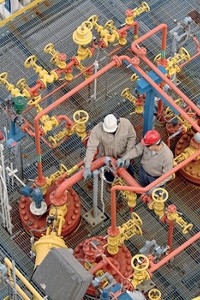Advertisement
Grab your lab coat. Let's get started
Welcome!
Welcome!
Create an account below to get 6 C&EN articles per month, receive newsletters and more - all free.
It seems this is your first time logging in online. Please enter the following information to continue.
As an ACS member you automatically get access to this site. All we need is few more details to create your reading experience.
Not you? Sign in with a different account.
Not you? Sign in with a different account.
ERROR 1
ERROR 1
ERROR 2
ERROR 2
ERROR 2
ERROR 2
ERROR 2
Password and Confirm password must match.
If you have an ACS member number, please enter it here so we can link this account to your membership. (optional)
ERROR 2
ACS values your privacy. By submitting your information, you are gaining access to C&EN and subscribing to our weekly newsletter. We use the information you provide to make your reading experience better, and we will never sell your data to third party members.
Policy
Finally, Good Economic News
by Rudy M. Baum
May 17, 2004
| A version of this story appeared in
Volume 82, Issue 20
This week's issue of C&EN carries the first truly bright economic news for the chemical industry that we've seen in almost four years. The headline on the lead Business Department story--"Chemical Company Earnings Soar"--has been a long time in coming.
After the bottom fell out for chemical company earnings in late 2000, the industry entered one of its worst slumps in decades. Early predictions of a turnaround proved premature. As I attended various industry meetings in 2003, I regularly asked executives if they could predict when sales and earnings would begin to tick upward. Having been burned repeatedly, they generally declined to speculate.
But the strengthening U.S. economy appears to have finally kicked in for chemical companies. First-quarter earnings at 24 of the 25 chemical companies regularly surveyed by C&EN rose 79.4% from first-quarter 2003 to $2.5 billion as total sales increased 14.7% to $35.1 billion, reports Senior Correspondent William Storck. All but two of the surveyed firms showed increases. The aggregate profit margin for the group jumped to 7.1% from 4.6% in the comparable quarter in 2003, the best profit margin for the surveyed companies since the second quarter of 2000.
Storck, who has been covering the chemical industry for 27 years, says: "It has taken a long time for the U.S. chemical industry and, indeed, the economy to even find the map to the road to recovery. It seemed that every time industry executives expressed optimism, they were slapped down by events. First it was the Sept. 11, 2001, attacks, followed by Afghanistan, financial scandals, the invasion of Iraq, and skyrocketing oil and natural gas prices. In a highly cyclical industry such as chemicals, the effect of geopolitical events on an already weak economy always seems to make the situation exponentially worse. It got to the point where industry leaders I spoke with were anticipating the next event. Even now, there is still only a cautious optimism in the leadership ranks."
Sales and earnings for U.S. pharmaceutical and biotechnology companies also posted solid to spectacular growth in the first quarter. Storck reports that total earnings for nine U.S. pharmaceutical companies regularly surveyed by C&EN increased 21.9% from first-quarter 2003 to $11.6 billion on a 17.7% sales increase to $51.6 billion. For the 30 biotech firms surveyed by C&EN, earnings increased 50.9% from first-quarter 2003 to $1.58 billion on sales that rose 27.6% to $8.46 billion.
This kind of growth across the industries that make up the business side of the chemical enterprise is good news for chemists. Almost four years of dismal economic performance has translated into a soft job market for chemical professionals. That hasn't changed yet, but there are encouraging signs that companies, especially pharmaceutical companies, are ready to start hiring again.
Other business news is in this week's cover story, C&EN's annual compilation of the Top 50 U.S. chemical producers. Associate Editor Alex Tullo notes that, because of flat sales growth and little in the way of mergers and acquisitions activity, the distinguishing feature of the 2003 Top 50 is how much it resembles the 2002 version.
For the third straight year, Dow Chemical and DuPont hold the number one and two positions in the Top 50. Nine of the top 10 companies this year were in the top 10 last year. Newcomer to the Top 50, Huntsman Corp.--which now reports all of its sales to the Securities & Exchange Commission because it has publicly traded bonds--elbows its way into the sixth position.
Tullo writes that, overall, 2003 "was a better year financially for the U.S. chemical industry than 2002. Combined sales for the 50 top U.S. companies surged ahead 12.7% versus 2002, hitting $206.4 billion." While the earnings picture for the group was mixed in 2003, the aggregate performance now appears to have held clues to the first-quarter 2004 performance reported by Storck.
Of course, a single quarter does not constitute a trend. But barring another kick in the teeth of the sort noted by Storck, it appears that the chemical industry may have finally turned the corner everyone has been looking for.
Thanks for reading.





Join the conversation
Contact the reporter
Submit a Letter to the Editor for publication
Engage with us on Twitter